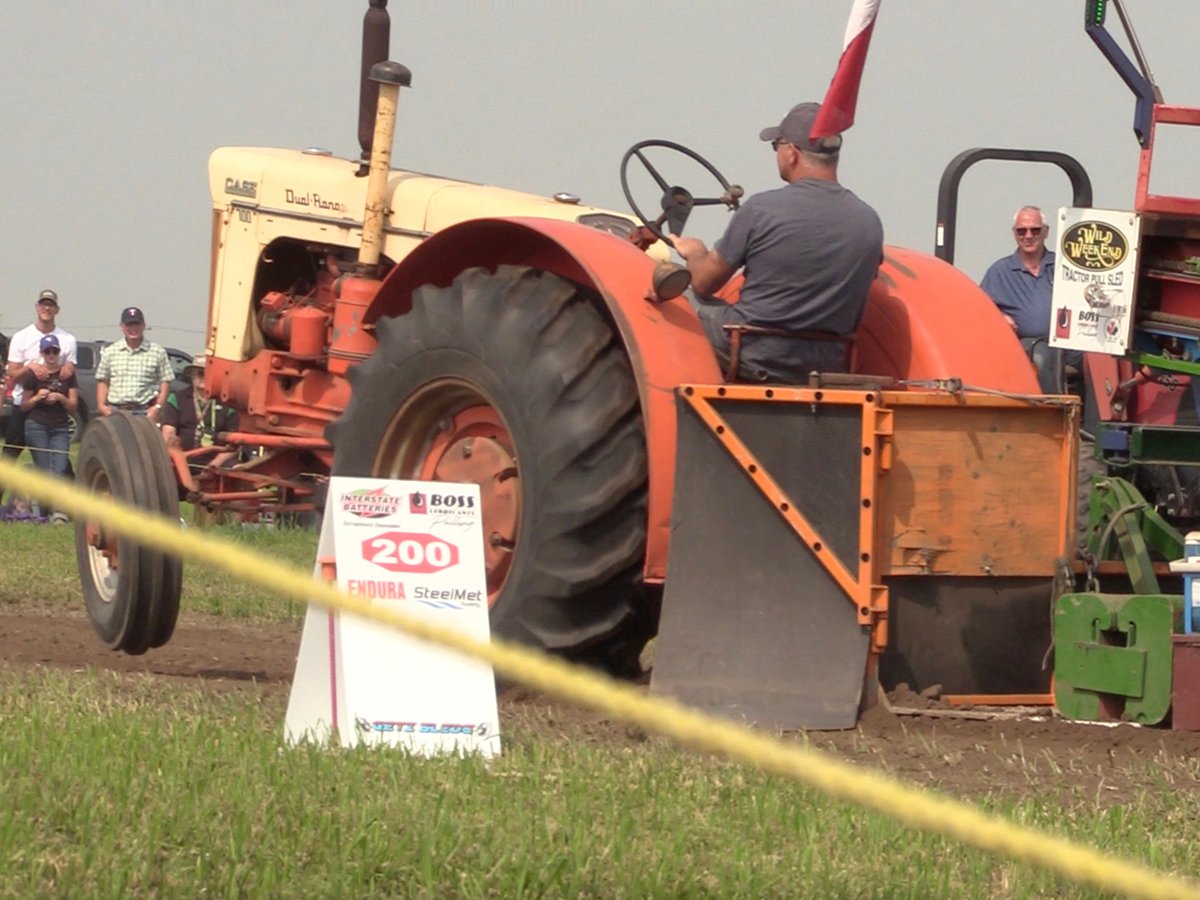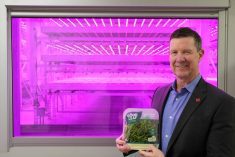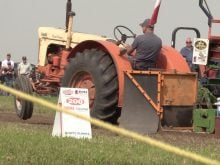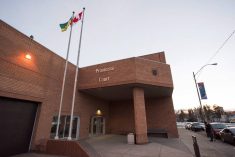The school in Altario, Alta., conducts a research project that grows livestock fodder using an indoor hydroponics system
Glacier FarmMedia – There’s been a lot of conversation about vertical hydroponic-based farming and its possible role in food sovereignty.
Students at one small-town Alberta school are testing how the technology could be used to feed cattle.
The research project at Altario school involves growing cattle fodder in an indoor hydroponics system.
Read Also

Vintage power on display at Saskatchewan tractor pull
At the Ag in Motion farm show held earlier this year near Langham, Sask., a vintage tractor pull event drew pretty significant crowds of show goers, who were mostly farmers.
It’s not a totally new concept for the school, which boasts 64 students from kindergarten to Grade 12. The facility already has two large hydroponics systems to grow produce for human consumption.
“That’s gone well,” said principal Kevin Van Langen.
Altario school began its agriculture program in 2016. It is now known as the student-led farm. Students raise cattle, poultry, sheep and turkeys, and grow produce in modular hydroponic food units. The students also run a small store to sell meat and produce grown at the school.
Grade 7 students help lead the way on the project, serving as farm leaders and taking mentorship roles with younger students.
Van Langen said participation in the student-led farm is voluntary, but most of the student body gets involved.
“The students themselves make most of the decisions for the farm, like when to buy, what to buy, what to sell and what they want to get into or move forward with, or what they want to get out of. They have very hands-on control of the farm,” he said.
In the school’s newest endeavour, farm leaders wondered if they could hydroponically grow feed for animals, since they were already growing food for humans. The project is starting to yield results, but it gained attention early.
The school received $199,000 in financial support for the initiative from Results Driven Agriculture Research, a facet of the federal-provincial Sustainable Canadian Agricultural Partnership agreement. That funding is meant to support partnerships with the agricultural industry, hydroponic systems manufacturers, nutritionists, accountants and college research teams.
After the school set up its new feed-focused hydroponics unit, students began the process of seeding barley and sprouting it. The barley is ready for livestock to eat within six days.
“The claims are that it helps with digestion and it’s good for cattle and it’s an efficient way of feeding,” said Van Langen.
“You just seed it on the tray and then the seeds sprout. You pull the entire mat of seed and sprouted greenery out. There’s no soil. There’s no waste. The entire works is fed to the animal.”
The feed is meant to supplement or replace part of the cattle ration.
The school’s feed production takes up an 800-sq.-foot building. That small space can produce as much fodder as what can be grown on 300 acres, according to project leaders.
Research now turns to the cost efficiency of the practice.
“Does it make sense, economically, to grow cattle feed indoors? If it does, I think that’s great news for the industry, because it’s a response to drought and climate change,” Van Langen said.
That last point is top of mind in the Altario region, which has been declared a drought area for several consecutive years.
“It’s an issue, and people are selling parts of their herd to buy feed for the rest of their herd and there’s a lack of feed,” Van Langen said.
“It’s a pertinent question. It’s based on reality that our students are experiencing at home, but that our community is also experiencing. It’s very relevant,”
There are more collaborators coming for the project, although the school has not yet publicly announced them.
An Alberta college is one of those names, Van Langen said. That addition will help mentor Altario students in proper research techniques. The school also has industry members who will provide the cattle that students will require for a proper analysis of their hydroponic feed system.
The partnerships between industry, post-secondary institutions and Altario school have been positive, Van Langen said.
“When you’re such a small school, you only have so many teachers in that teaching body. But if you see the expertise in your community as an opportunity to be shared with your students, suddenly you have a very large teaching body.”
Students hoped to produce sprouted barley for fodder by May 10, followed immediately by feeding it to animals.
“Over the course of about three months, we should be able to have some initial data,” Van Langen said.
“This level of research is special for a K-12 school. Most of the research will be done by our high school students … One of the goals when we started our agricultural program was to create more career pathways for students in agriculture, so they had a better understanding of what the opportunities are out there. I think we’re accomplishing that.”
He also noted the potential role of value-added agriculture in the future of rural communities.
“(If) we can bring value-added agriculture to our rural communities, we create jobs and we have families that repopulate our areas, which is good for our schools.”


















